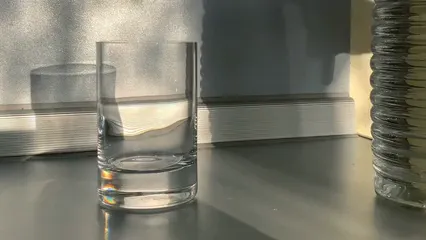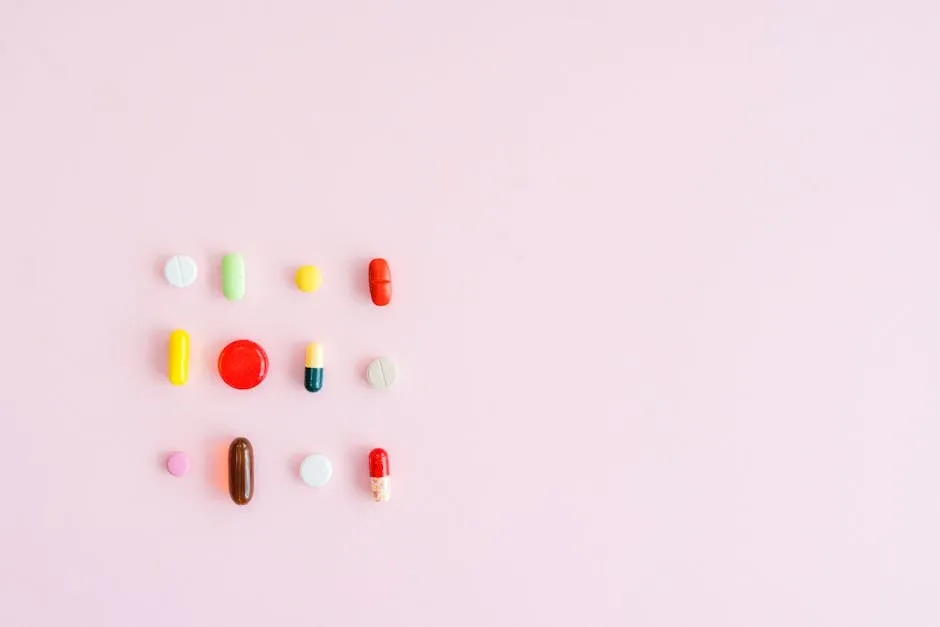
Why Are My Veins So Visible?
Why Are My Veins So Visible?
Introduction
Visible veins are common and often harmless. Many people notice their veins popping out, especially in their hands and arms. However, sometimes this can signal underlying health issues. Understanding what causes veins to be more visible is key to managing any concerns effectively.
One way to help manage vein visibility is through the use of compression socks. These nifty garments help improve blood flow and can diminish the appearance of bulging veins. Plus, they can be a lifesaver for those long days on your feet!
Summary and Overview
In this article, we will discuss the reasons behind visible veins. It’s normal for veins to become prominent, but certain factors can indicate health concerns. Genetics, lifestyle choices, and medical conditions can play a significant role in this visibility. We’ll explore these factors in detail, including how age, body fat percentage, and hydration impact vein appearance. Additionally, we’ll cover treatment options for those who are self-conscious about their visible veins. Understanding these elements can help you make informed decisions about your vascular health.

What Causes Veins to Be More Visible?
Skin Tone and Pigmentation
Skin tone plays a significant role in how visible veins appear. Lighter skin tones often make veins more noticeable due to the contrast. With thinner skin, veins can show through more easily. In contrast, darker skin can mask vein visibility. Additionally, the texture and thickness of your skin can impact how veins appear. Thinner skin allows for more transparency, leading to a more pronounced look.
Age
As we grow older, our skin loses elasticity and collagen. This natural aging process makes skin thinner and less effective at hiding veins. Over time, weakened valves in veins can also contribute to their prominence. Aging affects vascular health, allowing veins to stretch and bulge more, making them increasingly visible.
Body Fat Percentage
Your body fat percentage significantly influences vein visibility. Lower body fat means less cushioning over veins, making them more prominent. This is especially true in areas like the arms and hands. In contrast, higher body fat can obscure vein visibility. The relationship between body composition and vein prominence is straightforward: less fat equals more visible veins.
Hydration Levels
Hydration is crucial for maintaining healthy veins. When you’re dehydrated, blood volume decreases, causing veins to appear more pronounced. Proper hydration helps keep blood flowing smoothly, reducing visibility. Staying hydrated ensures that your vascular system remains healthy, which can help minimize the appearance of veins. Keeping an eye on your water intake can make a noticeable difference in how your veins look.
For those who struggle to keep track of their hydration, a hydration tracking water bottle can be a game changer! It helps you monitor your water intake, ensuring you stay at your best and your veins stay less visible.

Genetics
Genetics can significantly affect how visible your veins are. If your family has a history of prominent veins, you might notice similar patterns. Certain hereditary conditions, like varicose veins, can make veins more noticeable. This means that if your parents or siblings have visible veins, you may be more likely to experience the same. Understanding your family history can help you determine if your visible veins are a normal trait or if they signal a need for further evaluation.
Exercise and Physical Activity
Engaging in regular exercise, especially strength training, can make your veins more visible. When you work out, your muscles require more blood. This increased blood flow causes your veins to expand and become more pronounced. While this effect is often temporary, consistent physical activity can improve your overall vascular health. Over time, regular exercise promotes better circulation and can lead to healthier veins, reducing the likelihood of visible bulging.
To enhance your workout routine, consider adding resistance bands for exercise. They are perfect for building strength without putting too much strain on your veins and joints!

Hormonal Changes
Hormonal fluctuations can also influence vein visibility. For instance, pregnancy and the menstrual cycle can cause veins to swell. During these times, blood volume increases, and veins may dilate, making them more prominent. Additionally, thyroid disorders can affect hormone production, contributing to visible veins. If you notice significant changes in vein appearance during hormonal shifts, it might be worth discussing with your healthcare provider.
Environmental and Lifestyle Factors
Environmental and lifestyle choices play a crucial role in vein appearance. Heat can cause veins to dilate, making them more visible. Prolonged sitting or standing may also lead to increased pressure in veins, resulting in noticeable bulging. Smoking can harm vein health and worsen visibility over time. By adopting a more active lifestyle and avoiding extreme temperatures, you can help maintain better vascular health and reduce the appearance of your veins.

Should I Be Concerned About Visible Veins?
Visible veins are often harmless, but sometimes they signal underlying health issues. If your veins suddenly become prominent, it’s wise to pay attention. Certain symptoms can indicate a more serious condition. For example, if you experience pain, swelling, or discoloration around visible veins, it’s time to consult a healthcare professional.
Also, be vigilant for signs of varicose veins or deep vein thrombosis (DVT). If you notice significant changes or discomfort, don’t hesitate to seek medical advice. It’s better to be safe and get a thorough evaluation.
Warning Signs to Look For
Keep an eye out for symptoms like:
- Pain or throbbing in the affected area
- Swelling around the veins
- Skin discoloration or a warm sensation
These warning signs could indicate issues like varicose veins or even DVT. If you notice any of these symptoms, it’s crucial to consult a medical expert to determine the cause and appropriate treatment.

How to Manage Visible Veins
Managing visible veins can often be addressed with simple lifestyle changes and medical options. Here’s what you can do.
Lifestyle Changes
Start by focusing on hydration. Drinking enough water each day helps maintain proper blood volume and reduces vein visibility. A balanced diet rich in fiber, vitamins, and minerals will also support overall vein health. Regular exercise, especially activities that promote circulation, can make a difference too.
Incorporating compression garments can provide additional support. These garments help improve blood flow and can diminish the appearance of bulging veins. Wearing them during long periods of sitting or standing can be particularly beneficial.
For a delicious way to support your vascular health, consider a herbal tea variety pack. Sipping on herbal tea can be soothing and may offer benefits for circulation, making your veins feel less pronounced!

Medical Treatments
If lifestyle changes aren’t enough, medical options exist to address visible veins. Sclerotherapy is a popular choice, involving an injection that collapses the affected veins over time. Laser therapy is another effective method, using focused light to reduce vein visibility without invasive procedures.
For more severe cases, surgical options may be necessary. Procedures like vein stripping or ligation can remove problematic veins. It’s important to consult with a healthcare professional to determine the best treatment based on your specific condition and needs.

When to See a Doctor
If you notice sudden changes in your veins, consult a healthcare provider. This is especially important if your veins are significantly more prominent than before. Accompanying symptoms like pain, swelling, or discoloration might indicate a deeper issue. It’s wise to seek professional evaluation if you have a family history of vein problems. A doctor can assess your vascular health and recommend appropriate action. Early detection can prevent complications related to conditions like varicose veins or deep vein thrombosis (DVT). Remember, being proactive about your health is always beneficial.
Conclusion
In summary, visible veins are often normal and not a cause for concern. Factors like age, genetics, and hydration can affect their appearance. However, understanding their causes is essential for managing your vein health. If you notice significant changes or discomfort, don’t hesitate to seek professional advice. Monitoring your vein health and addressing concerns early can lead to better outcomes. Take control of your health by staying informed and consulting healthcare professionals when necessary. Your body will thank you for it!
And while you’re at it, why not treat yourself to some self-care? A self-care journal could help you reflect on your health journey and keep track of your wellness goals!
FAQs
What are the common causes of visible veins?
Visible veins can result from several factors. Age and genetics often play significant roles. Thinner skin makes veins more noticeable, especially in lighter skin tones. Low body fat also contributes to this visibility, as there is less tissue to pad the veins. Exercise increases blood flow, temporarily enhancing visibility. Hormonal changes and environmental factors like heat can also cause veins to stand out.
How can I improve the appearance of my visible veins?
To improve the appearance of visible veins, start with hydration. Drinking enough water helps maintain proper blood volume. A balanced diet rich in vitamins supports vein health. Regular exercise enhances circulation, promoting healthier veins. Compression garments can also reduce visibility by providing support. If needed, consult a doctor for additional treatment options like sclerotherapy or laser therapy.
Are visible veins a sign of a serious health issue?
Visible veins can sometimes indicate more serious health issues. Conditions like varicose veins or deep vein thrombosis (DVT) may be the cause, particularly if accompanied by pain or swelling. If you notice sudden changes in your veins, seek medical advice. It’s crucial to differentiate between harmless visibility and symptoms that require attention.
Can diet influence the visibility of my veins?
Yes, diet can impact vein visibility. A diet low in nutrients may lead to poor vascular health. Foods rich in fiber, antioxidants, and healthy fats support circulation and vein strength. Staying well-hydrated is equally important, as dehydration can make veins appear more pronounced. Maintaining a balanced diet promotes overall health and can reduce the visibility of veins.
Is exercise good for my veins?
Exercise benefits vein health significantly. Regular physical activity improves circulation and strengthens the vascular system. While exercise may temporarily increase vein visibility, it promotes long-term health. Activities like walking, swimming, and cycling are excellent choices for maintaining healthy veins. Staying active helps prevent conditions like varicose veins and supports overall well-being.
Please let us know what you think about our content by leaving a comment down below!
Thank you for reading till here 🙂
All images from Pexels




